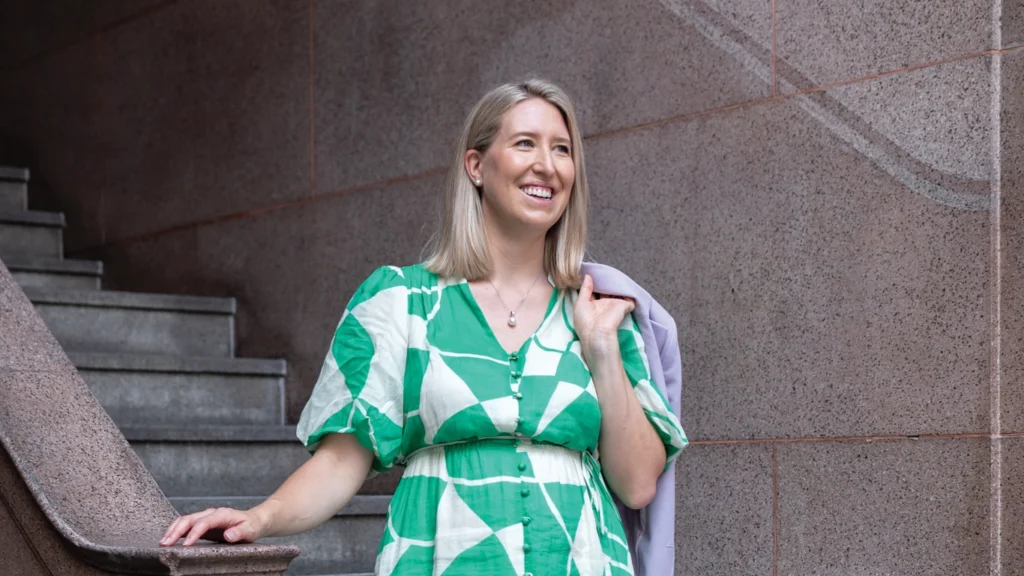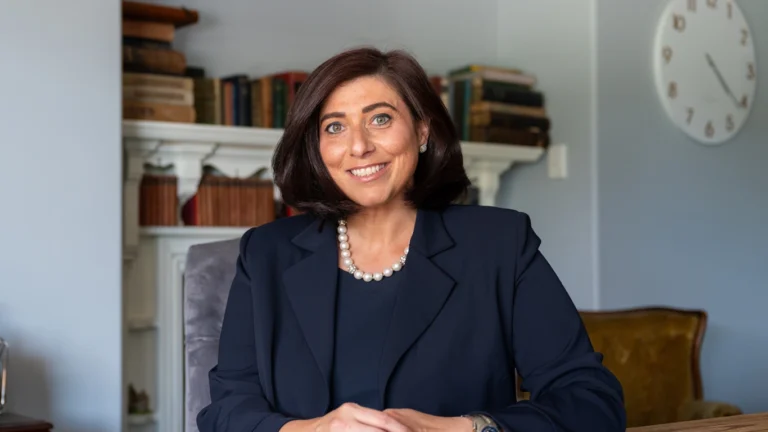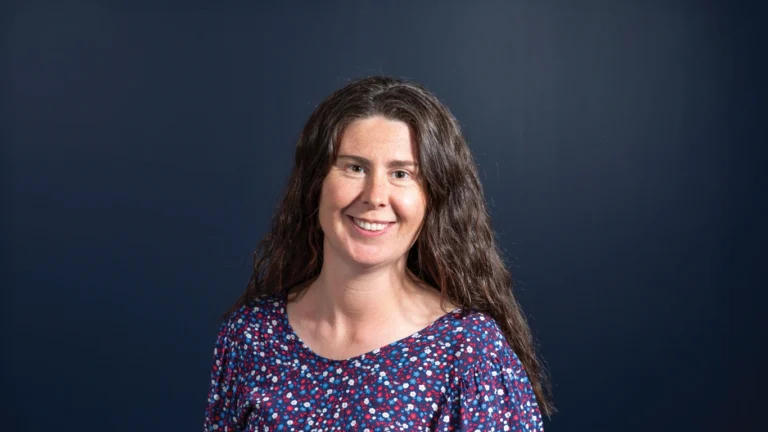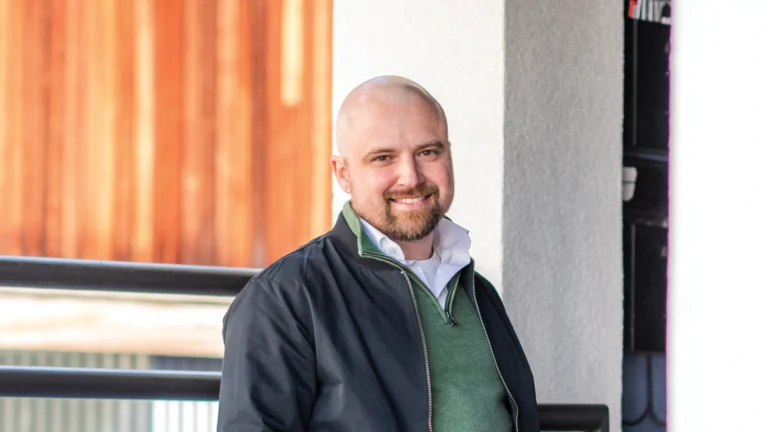
Growing a career and a family simultaneously remains a challenge that many women face daily. And while attitudes towards working women have evolved since the abolition of the draconian ‘marriage bar’ that was common practice between the late 1900s to the 1970s (when women were forced to quit their jobs after marriage), managing a home life with work commitments is often akin to the dance of the desperate, a juggling act in which some of the balls in the air will likely… no, definitely, be dropped.
This is something that Lis Flett, recently appointed Head of Legal at Aurora Energy and former GC of Cancer Council NSW, knows only too well.
Lis has three children, aged seven, three, and six months, and recently started her new role after four months’ parental leave. It’s a far cry from what she’d imagined at the beginning of her pregnancy, when her family packed up their lives in Sydney and relocating to Hobart.
That Lis chose to change her job and location while on maternity leave says much about her drive and determination. Lis was named as one of Australasian Lawyer’s top 50 women in the Australian legal profession in the 2024 Elite Women report (for her work at Cancer Council NSW), and won both the Lawyers Weekly Not For Profit Lawyer of the Year and Excellence awards. In 2023 she was named General Counsel of the Year by the Association of Corporate Counsel, and her team were also finalists across multiple award categories.
When asked how she ‘does it all’, Lis replies that she doesn’t. She does what she can as well as she can; perfection is not the goal. “I often say that parenting is about knowing which balls will bounce, but also knowing where the broom is for the inevitable glass ball that will get dropped. I also have a husband who shares parenting responsibilities, access to childcare, friends and fly-in family who are willing to step in if a crisis arises, as well as takeaways and an occasional cleaner. And still, it’s not always easy!”
“The expectations I felt I had to live up to as a new mother were immense.”
Lis has made numerous career changes driven by the aim of putting her and her family’s wellbeing front and center, but believes the game-changer for her came when the traditional model of office working was flipped on its head. “When we had our first child, in 2017, I returned to work much earlier than planned. Our daughter was in daycare from dawn til after dinner five days a week. The pressure to be performing to a high standard at work while also meeting the feeding, sleeping and nurturing expectations I felt I had to live up to as a new mother was immense.”
When Lis had her second child, the circumstances couldn’t have been more different. It was 2021 and Sydney was in lockdown. “I started my job at Cancer Council NSW when my daughter was four months old, but unlike with my first, it was another nine or ten months until I stepped into the office. Working from home created more harmony between parenting and work. Initially my husband and I shared care during her waking hours while we both worked. Once she started daycare, I could go there at lunchtime to breastfeed. It was so much less stressful than when I was previously trying to manage work and feeding at the office. My new found flexibility allowed me to be a present parent whilst kicking some of my biggest career goals to date – but it took a global pandemic for me to be able to experience that.
“But even in this post-pandemic world, the idea of ‘having it all’ – without something suffering as a result – is still, I think, a fallacy. We all want to maintain family, career success, travel, hobbies, and relationships throughout our lifetime, but striving to have all of these things at once will leave you exhausted and unable to be fully present for any of them. I am only now beginning to unlearn the idea that productivity is the measure of success. I now prioritize being present – and if that means something has to wait, so be it.”
Lis acknowledges that choosing to have a family while working full time is not always a choice freely made. For her, the decision was heavily influenced by the stage of life she was in at the time, the needs of her employer and her financial circumstances. But she is also open about how her parenting experience influenced her choice.
“I struggled a lot with my first child in the early days because she wasn’t an easy baby. It was an overwhelming, exhausting and emotional time. In some ways, going back to the stability and more controlled environment of the workplace was a relief from the challenges of parenting a newborn the first time around, even though that brought with it another unique set of challenges and a deep sense of loss for the precious time we could otherwise have shared. I also struggled to work part-time. I had a disproportionately high workload, was less valued by the business, and received less pay, but I was still taking on the majority of childcare responsibilities – and it all left me feeling short-changed.”
Lis says that when it comes to returning to the workforce after having children, mothers have to combat not only societal pressure but also their own conflicting feelings, needs and desires. “It’s important that we consider how to best support mothers to make the transition into parenthood a success, and that we ensure equitable policies that encourage and support working fathers to engage in the care work.”
According to Lis, family provides her with perspective and grounding in her career, as well as a sense of purpose. “My family are my everything, and they are inherently linked to my perspective on my career. They fuel my drive to stretch myself and to be a role model. I’m constantly wishing I could spend more time with them, but I want to show up as my best self, and that includes striving towards my professional goals. However, in this new chapter of prioritizing my presence over productivity, I have accepted that some goals will have to wait.”
Lis’ sentiments are echoed by many women in law (try googling ‘is it possible to be a lawyer and mother?’). And while some employers are supportive, others are not.
In an article published April 2024 on Law.com International, Megan Gray wrote: “I could no longer work in the 24/7, all-hours model; I needed to work fixed hours, more like a 9am-5pm. I intended to give the same level of dedication to my job during work hours, and then switch off outside of work hours so I could be present with my daughter and also do the very real work of motherhood. It didn’t cross my mind the firm would say no. When the no came, it was a potent mix of confusion, outrage, sadness and shock… The partner I was told to speak with made me feel worse, telling me I would have “no value” to the firm if I worked 9am- 5pm… The partner also said that if the firm accepted such an arrangement, it would be doing so to ‘keep a woman’. Wasn’t that exactly the point?”
The experiences faced by Lis and Megan, and undoubtedly many others like them, highlight an interesting conundrum. Never before have working parents had so much flexibility – but the challenges facing them have not gone away. So, what to do?
For Lis, there are lessons to be taken from the pandemic. “Flexible working from home relieved so many pressures and barriers for me and so many other working mothers, and the work didn’t suffer.”
Sadly, it’s still hard to find firms or workplaces that have remote or fully flexible policies, and allowing a new or breastfeeding parent to work remotely (if that’s what they feel they need) is still seen by some as going too far.
How, then, to get workplaces onboard? Lis argues that creative and radical flexibility for parents, especially in the very early days when they may be breastfeeding, shouldn’t be so challenging.
“We know that a more inclusive workplace is a more productive workplace. Flexibility in the form that best suits the employee means greater productivity, engagement, and retention. Why wouldn’t you want that after supporting an employee through their pregnancy and parental leave?”
There is, she states, a fine line between an employer doing what they are required to by law, ticking the box, and doing what is human – which is to be kind, generous and accommodating.
“Sometimes, we need to think about providing more than just the legal bare minimum.”
“Sometimes a person needs more than just the legal bare minimum. What if, for example, you could return remotely for a short period before returning to the office after having a baby? Or workplaces creating other parenting-friendly working options? We’ve seen companies like Canva provide their employees with the option to work in coworking spaces that have on-site childcare.
“We’re trying to solve very human problems with solutions that are based on fixed policies and fixed mindsets. During the pandemic we had a complete mindset shift around the way we work. We also learnt that there is no single way of working that suits everybody. It’s sad that, in our new post- pandemic hybrid or office-based workplaces, we’re still seeing a one-size-fits-all approach – with employers once again failing to live up to their flexible working policies beyond options to work part time.”
For Lis, if we really want to tackle massive societal issues like the gender pay gap, workforce participation, and the disproportionate sharing of domestic labor in our generation or lifetime, we have to be open to applying completely different solutions to the problems that exist today.
“Just as paid parental leave and basic flexible working have gone a long way to closing these gaps, more tailored and human-centered approaches to working, including through those early parenting years, could move the needle even further.”


